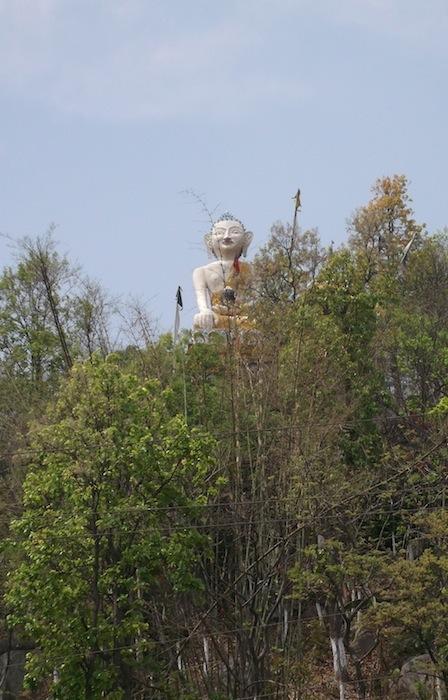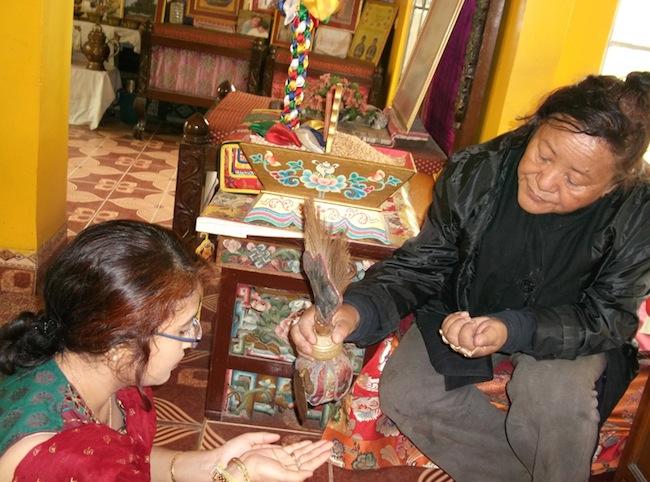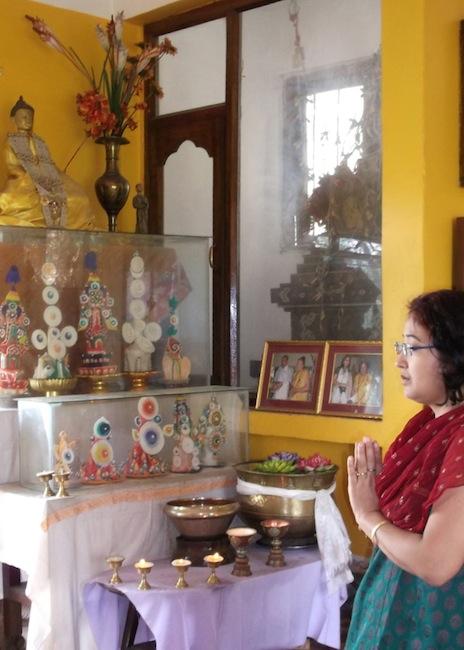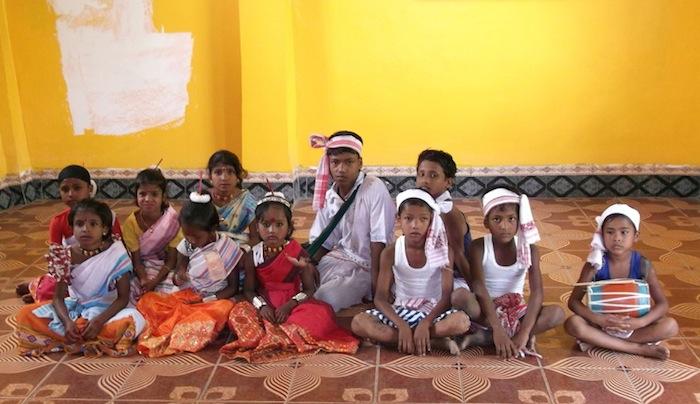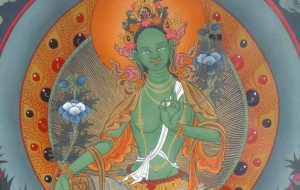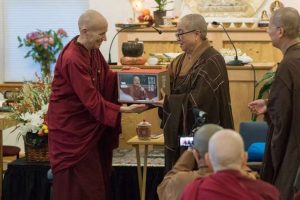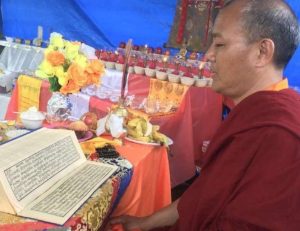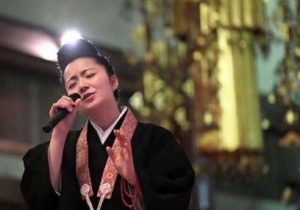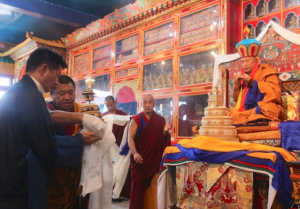The Assam Buddha Vihar is situated at Amingaon, a town across the Brahmaputra River in the greater area of Guwahati city (capital of Assam province, and largest metro area in northeastern India). It is a lovely but lesser known Buddha Vihar. In spite of its location by the side of a national highway, it is surrounded by bountiful greenery and can be recognized and viewed because of a prominent Buddha statue rising up through the trees high on a hill.
Assam Buddha Vihar was founded about 24 years ago due to a unique endeavour of a dedicated Buddhist woman named C. S. Lama who is the owner of the Vihar. She hailed from Bhutan originally and after receiving education at Darjeeling (West Bengal) was married to a Buddhist fellow. The couple moved to the Assam area of India to run their business – Lama Automobiles & Lama Transport Company – at Guwahati . After the sudden demise of her husband, C.S. Lama decided to undertake a dedicated life ‘at the feet of Buddha’ and thus established Assam Buddha Vihar with the help of the Government of Assam.
C. S. Lama is better known as ‘Guru mai’ among the local Assamese people. She provides free education to the children belonging to different religious beliefs that live in a slum area nearby who could not have education otherwise. She also teaches them art, music and dance without taking payment from them. However, her teaching always start and end with prayer for them to concentrate on one Supreme Being. She feels that this helps to prevent them from committing juvenile crimes which are a common tendency among the slum children.
Besides daily prayers and other rituals at the Vihar, the Buddha’s Birthday (Buddha Jayanti or also known as Buddha Purnima) is celebrated with great pomp and gaiety here during April and May. This occasion celebrates and honors the birthday of the lord Buddha and the whole month is considered to be holy, during which time only vegetarian food is consumed by the residents and students. A day before Buddha Jayanti begins, the house is cleaned and decorated, old clothes are replaced with the new ones and the statue of the Buddha is bathed. On that very day of special ceremony, a day-long feast is arranged for guests to enjoy many different food selections to try; no one goes hungry and there is abundance of food to take home later.
The interesting thing I observed is that C. S. Lama is careful and thoughful to teach to children of all ages the Buddhist philosophy, rather than the theoretical aspects of Buddhism. She takes the utmost care in helping to shape and mold their behavior in the light of Buddhist ethics. In this way through her teaching, she guides the children with wisdom to reveal the triple path as shown by Buddha: sila , samadhi and prajna illuminate and help cultivate behavior in the children. This encourages better conduct from their otherwise unfortunate life in the slums. The day on which I happen to visit Assam Buddha Vihar was the first day of Assamese New Year and during that time the Assamese people celebrate the spring festival called ‘Rongali Bihu’. The happy and energetic students of C. S. Lama came to the Vihar to perform a Bihu dance (a dance form performed during this festival time) and received blessings also from their ‘Guru mai’. It was endearing to witness such devotion from this woman in her efforts to help these children have a better life.
According to the oral tradition of Assam, Buddha spent the later period of his life in Assam and also breathed his last breath in this province. Thus Buddha’s culture and tradition is not quite new here. Assam Buddha Vihar is a holy place for peace-loving people irrespective of caste, creed and religion. The surrounding greenery has a magical charm that lures the visitors to imbibe of its natural beauty, Buddhist culture and tradition. Moreover, C.S. Lama, the owner of the Vihar, is the storehouse of human values. Within a few minutes conversation with her, a visitor feels relief from the day long tiredness of hisher work. This great lone woman reinforces the fact that Buddha was an ethical teacher whose teaching is applicable in every walk of our life. We will never feel helpless as long as we cherish human values. If we lose any valuable part of our lives, we can revive and enhance the rest of what we have with the illumination from the light of the ideals shown by the lord Buddha.


